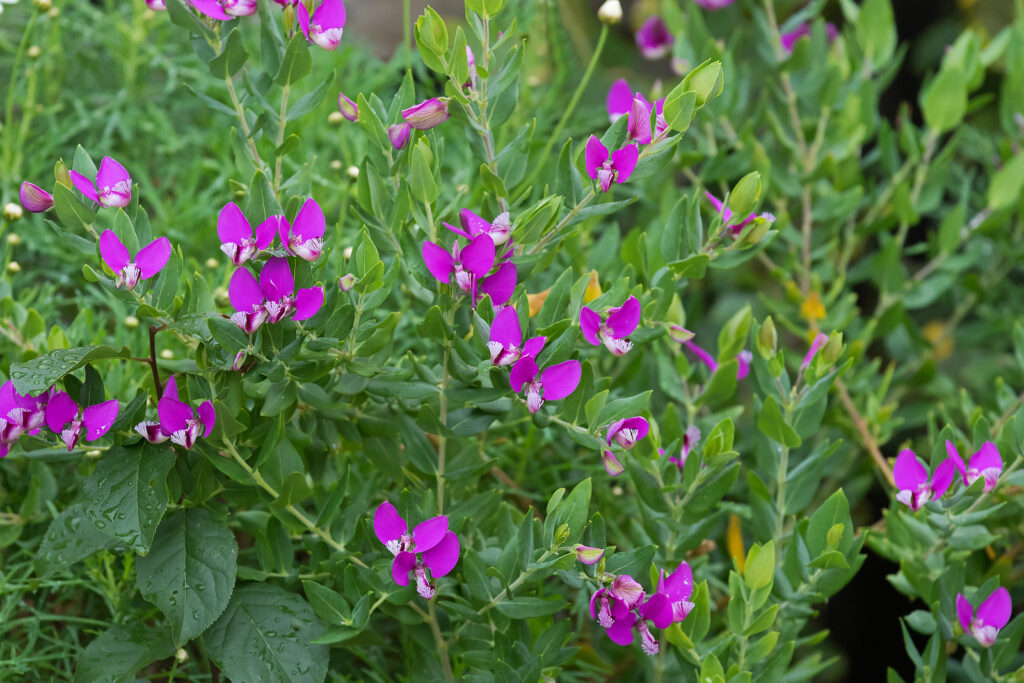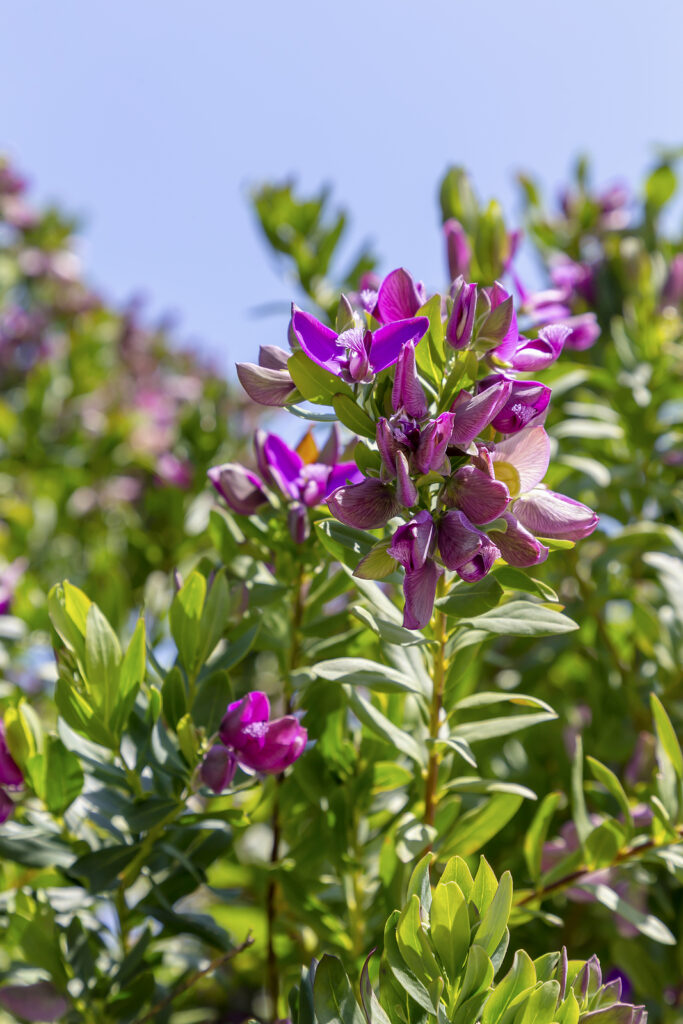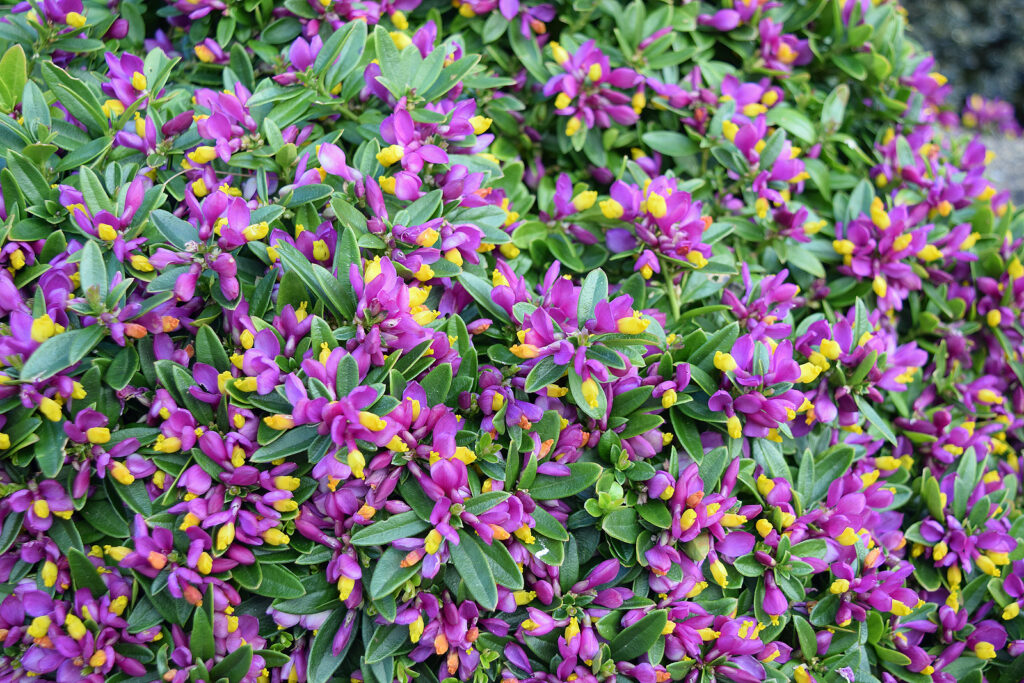Polygala includes perennials and shrubs that bear deep blue pea-like flowers in spring and summer. They are tender plants well-suited for warm gardens or for growing in a conservatory.
Polygala flowers have 5 sepals; the inner two form broad, petal-like “wings.” Leaves are blue-green.
There are 500 species in the Polygala genus. Two—Polygala x dalmaisiana and P. myrtifolia–are small shrubs that are prolific bloomers in summer. They make showy low hedges or border edges.

Get to know Polygala
- Plant type: Evergreen shrub, perennials
- Growing zones and range: Zones 6 to 10
- Hardiness: Leaves will drop and plant can be damaged in cold winter regions
- Height and width: 6 inches (15cm) to 8 feet (2.4m) tall depending on the variety, 3 to 8 feet (.9-2.4m) wide
- Foliage: Leaves can be alternate, opposite, and whorled
- Flowers: Racemes of pea-like flowers; each flower has 5 sepal, the inner two form, broad, petal-like wings
- Bloom time: Late spring and summer
- Uses: Woodland, rock garden, or shrub border
- Common name: Milkwort, Seneca, snakeroot
- Botanical name: Polygala
- Family name: Polygalaceae
- Origin: Southern Europe and South Africa
Where to plant Polygala
- Plant Polygala in full sun or part shade.
- Grow Polygala in humus rich, well-drained soil.

When to plant Polygala
- Plant container-grown Polygala in spring or autumn.
- Start plants from seed in spring.
Planting and spacing Polygala
- Space 1 to 8 feet apart depending on the variety.
How to water and feed Polygala
- Keep the soil evenly moist.
- Fertilize Polygala with an all-purpose organic fertilizer in spring.
Polygala care
- Mulch around Polygala with aged compost to slow soil evaporation.
Polygala pests and diseases
- Aphids and whiteflies are occasionally a problem.

Polygala propagation
- Sow seed of hardy species in containers in spring; sow seed at not less than 60°F (15°C).
- Take softwood cuttings in early summer, or semi-ripe cuttings in mid- to late summer.
Polygala varieties to grow
- Polygala calcarean: Low-growing perennial; upright spikes of deep blue flowers with a white fringe on the lip; grow 2 inches (5cm) tall and 8 inches (30cm) wide.
- P. chamaebuxus: Perennial grows 6 inches (15cm) tall and twice as wide; clusters of yellow flowers with white lips in late spring and early summer.
- P. x dalmaisiana, sweet pea shrub: Tender shrub with lanceolate blue-green leaves grows to 3 feet (.9m) tall and wide; purplish-red flowers in late spring and summer.
- P. myrtifolia, myrtle-leaf milkwort: Tender shrub grows to 3 feet tall and wide; blue-green ovate leaves; greenish-white flowers veined with purple in late spring and summer.















